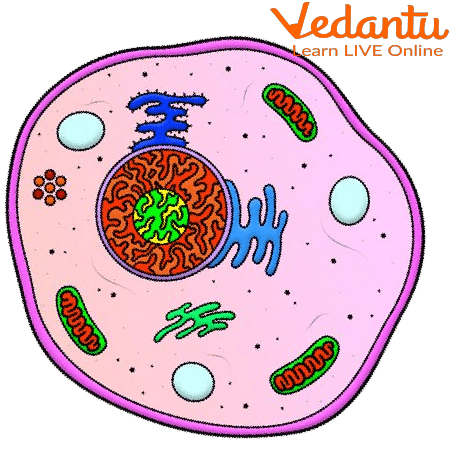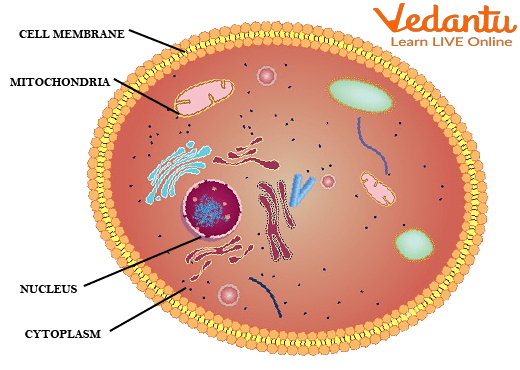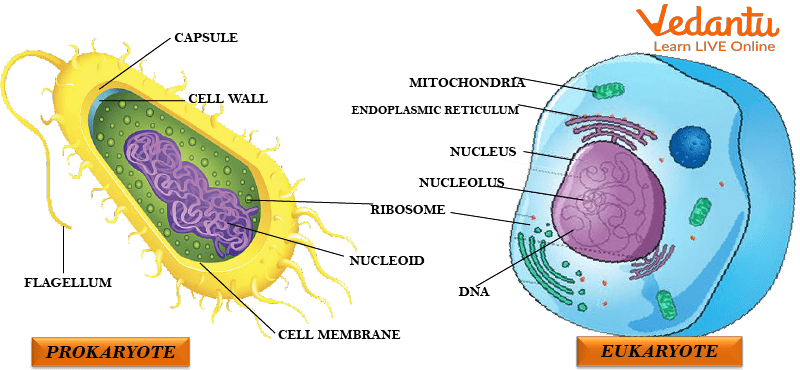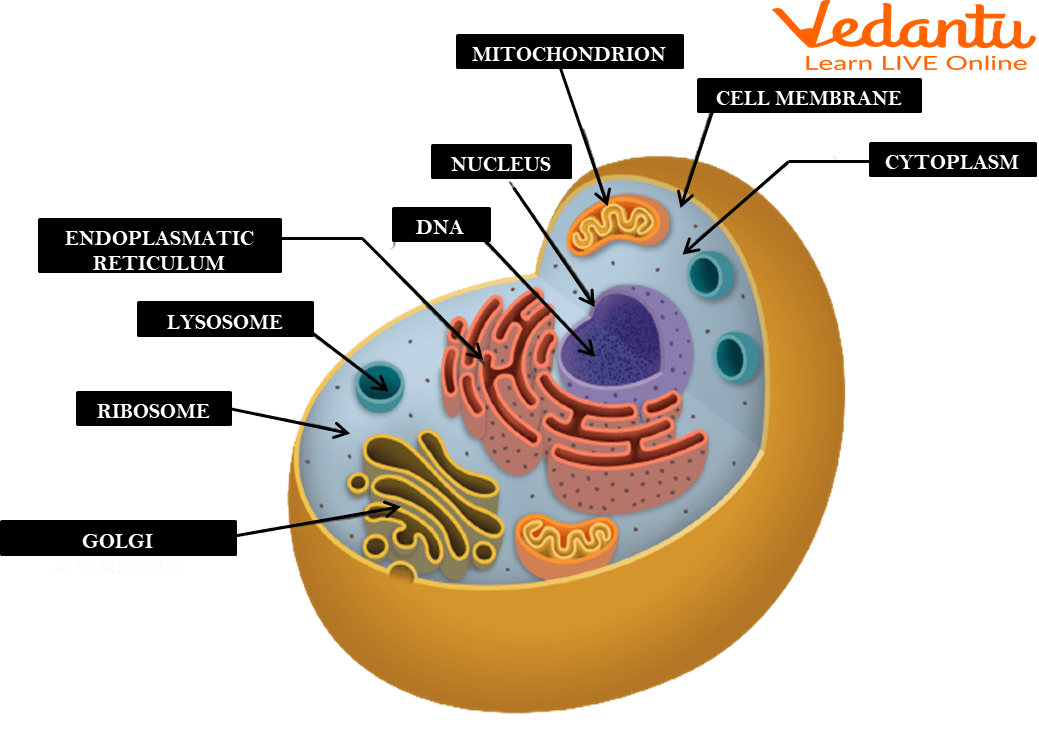




Key Components of Cells and Their Roles Explained
Does it ever come to your mind how we are made? Do you know everything you see is made of a million little things called cells or molecules or atoms? Well, today you will get the answer in this article, “What is a cell?”
The smallest structural and functional unit and foundation of all living things is the cell. Yes, all the organisms on the earth are made up of cells. A cell is a basic unit for forming any organism.

A Cell
The smallest unit in biology that can sustain life on its own and makes up all living things as well as the body’s tissues is the cell. The cell membrane, the nucleus, the cytoplasm, and mitochondria are the primary components of a cell. Cell and parts of the cell will be further discussed here.
Define Cell Biology
The study of the structure, function, and behaviour of cells is known as cell biology. Cells are the building blocks of all living things. A cell is the smallest unit of life and is responsible for organisms' survival and function. The study of the structural and functional units of cells is known as cell biology.
Parts of a Cell
The main parts of the cell are:
Cell Membrane: A covering outside the cell that regulates what goes in and out of the cell. It also provides some shape to the cell.
Nucleus: The most crucial organelle in the human cell is the nucleus which regulates all functions and processes of a cell. It contains the genetic material or the DNA of the human cell.
Cytoplasm: The cytoplasm is where the rest of the cell's components float around. It's largely made up of water.
Mitochondria: This is where a cell's energy comes from. Food that has been digested in the human body reacts with oxygen in the mitochondria to provide energy for the cell.

Parts of a Cell
Basic Types of Cell
A cell is an essential part of a living organism (plant and animal). Cells form an organism but an organism can be formed from a single cell or many cells. For example, a bacteria is made up of a single functional cell and hence is called a prokaryotic organism while a dog is made up of millions of such cells and is called a eukaryote.
Prokaryotic Cell
A prokaryotic cell is a small, basic cell that lacks a nucleus. Prokaryotes are very small organisms that cannot be seen by the naked eye.
How else do we see them then? We see them under instruments like microscopes.
The parts of the prokaryotic cell are the cell wall, cell membrane, flagella, nucleoid, cytoplasm, and ribosomes.
Eukaryotic Cell
These cells are the more complex ones, with more organelles. These are the kind of cells present in animals and plants.
Here are some of the most common components found in many cells: Mitochondria, Ribosomes, Nucleus, Cytoplasm, and Lysosomes.

Eukaryote and Prokaryote
Human Cell Structure
A human cell structure is a complex one and cannot be defined in a few lines. A human cell is a eukaryotic cell and hence has similar features as eukaryotic cells. There are many different types of cells in human-like skin cells, hair cells, liver cells, mucosal cells, etc.

Human Cell Structure
Functions of Cells in the Human Body
There are many different types of functions of cells in the human body and some of them are mentioned below:
Cells in the intestine help to absorb the nutrition provided by food.
Human blood cells help deliver oxygen to organs and fight against infections.
Nerve cells of sensory organs help to sense things around us and react to them.
Skin cells form the skin barrier and are protective in nature.
Muscle cells help us perform various movements with the help of muscles.
Difference Between Eukaryotes and Prokaryotes
Summary
Every living thing in the world is made of tiny cells we cannot see with naked eyes.
Eukaryotic cells are almost 10 times larger than prokaryotic cells. Organisms having eukaryotic cells are called eukaryotes while the organisms with prokaryotic cells are called prokaryotes.
FAQs on Parts of a Cell: Complete Guide for Students
1. What are the three main parts of a typical eukaryotic cell?
A typical eukaryotic cell is primarily composed of three essential parts. First is the cell membrane, an outer boundary that controls the passage of substances into and out of the cell. Second is the cytoplasm, a jelly-like substance that fills the cell and surrounds the organelles. Third is the nucleus, which acts as the cell's control centre by housing the genetic material (DNA).
2. What is the main difference between prokaryotic and eukaryotic cells?
The primary difference lies in their structure and complexity. Here’s a quick breakdown:
- Nucleus: Eukaryotic cells have a true, membrane-bound nucleus to house their DNA, while prokaryotic cells do not; their genetic material floats in the cytoplasm in a region called the nucleoid.
- Organelles: Eukaryotic cells contain many membrane-bound organelles like mitochondria and the endoplasmic reticulum. Prokaryotic cells lack these complex organelles.
- Size: Prokaryotic cells are generally much smaller and simpler than eukaryotic cells.
3. What are the key differences between a plant cell and an animal cell?
While both are eukaryotic, plant and animal cells have several distinct differences:
- Cell Wall: Plant cells have a rigid cell wall made of cellulose outside the cell membrane, which provides structural support. Animal cells lack a cell wall.
- Chloroplasts: Plant cells contain chloroplasts, the site of photosynthesis. Animal cells do not have chloroplasts.
- Vacuole: Plant cells typically have a large central vacuole that stores water and maintains turgor pressure. Animal cells may have small, temporary vacuoles, if any.
- Shape: Due to the rigid cell wall, plant cells have a fixed, often geometric shape, while animal cells have a more flexible and often irregular shape.
4. What are the functions of the nucleus, mitochondria, and ribosomes?
These organelles perform vital and distinct roles within the cell:
- Nucleus: Often called the "brain" of the cell, the nucleus controls all cellular activities and stores the cell's hereditary material, or DNA.
- Mitochondria: Known as the "powerhouse" of the cell, mitochondria are responsible for cellular respiration, the process of converting glucose and oxygen into usable energy in the form of ATP (adenosine triphosphate).
- Ribosomes: These are the sites of protein synthesis. They read instructions from the nucleus to assemble amino acids into proteins, which are essential for virtually all cell functions.
5. Why is the cell called the structural and functional unit of life?
The cell earns this title for two fundamental reasons. It is the structural unit because all living organisms, from the simplest bacteria to complex humans, are composed of one or more cells. It is the functional unit because the essential processes of life, such as metabolism, growth, response to stimuli, and reproduction, all occur at the cellular level. Nothing less than a complete cell can be considered independently alive.
6. What four components are found in all cells, both prokaryotic and eukaryotic?
Despite their differences, all cells on Earth share four universal components, which are essential for life. These are:
- A plasma membrane that acts as a barrier separating the cell's interior from the outside environment.
- Cytoplasm, the jelly-like region within the membrane where metabolic reactions happen.
- DNA, which serves as the genetic blueprint for the cell.
- Ribosomes, the molecular machinery responsible for building proteins.
7. If a cell were a factory, what roles would the nucleus, mitochondria, and cell membrane play?
Using a factory analogy helps clarify the functions of cell parts:
- The nucleus would be the CEO's office or control room. It holds the master blueprints (DNA) and sends out instructions for all factory operations.
- The mitochondria would be the power plants. They generate the energy (ATP) needed to run all the machinery and processes in the factory.
- The cell membrane would function as the factory's security and shipping department. It controls what raw materials enter and what finished products exit, ensuring the factory's integrity.
8. How does the structure of the inner mitochondrial membrane help its function?
The inner membrane of the mitochondrion is heavily folded into structures called cristae. This intricate folding is not random; it dramatically increases the surface area of the membrane. This vast surface area is crucial because it provides more space to embed the large number of proteins and enzyme complexes required for the electron transport chain, the final stage of aerobic respiration. More surface area means more energy production, making the mitochondrion highly efficient at generating ATP.









